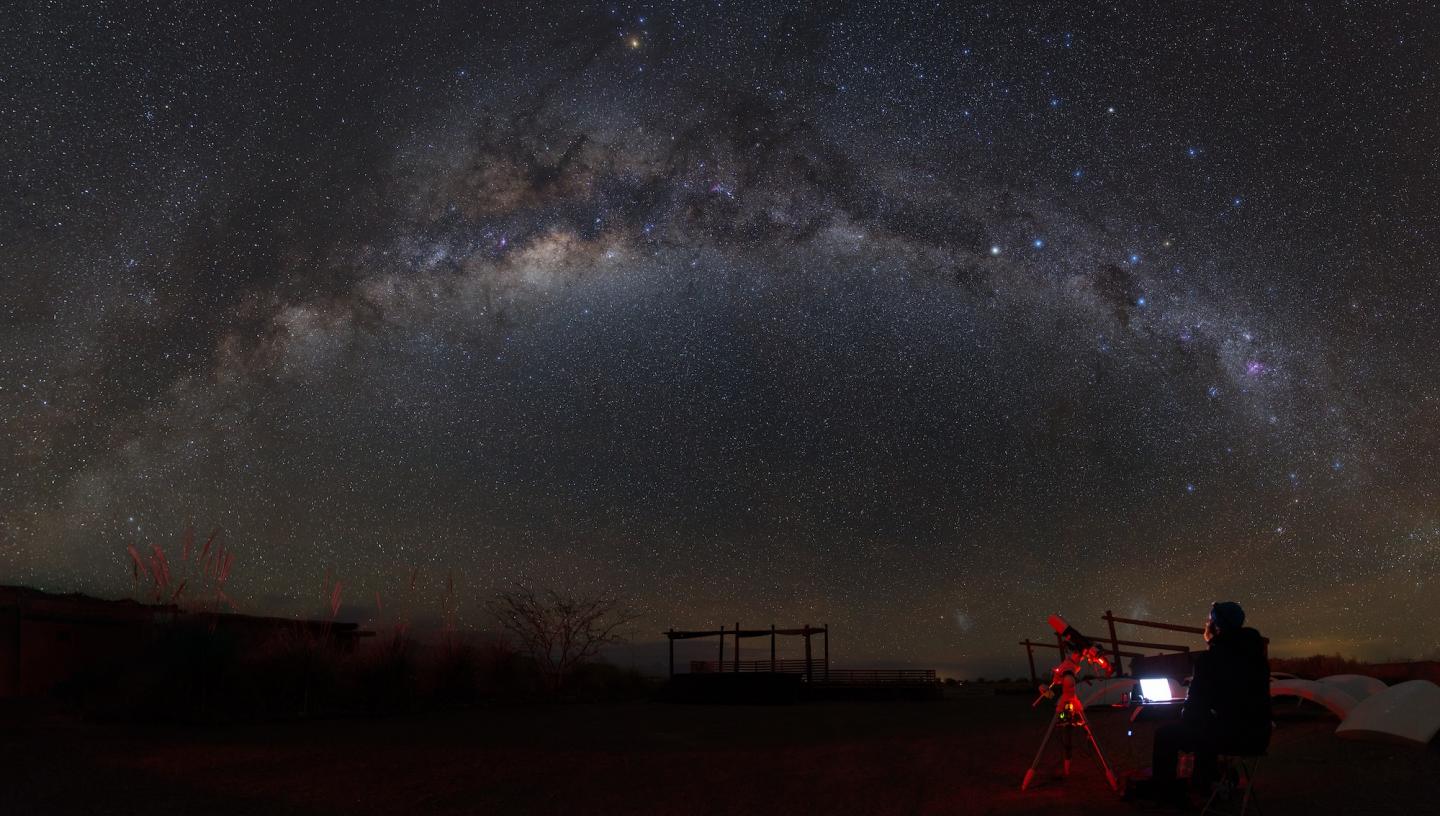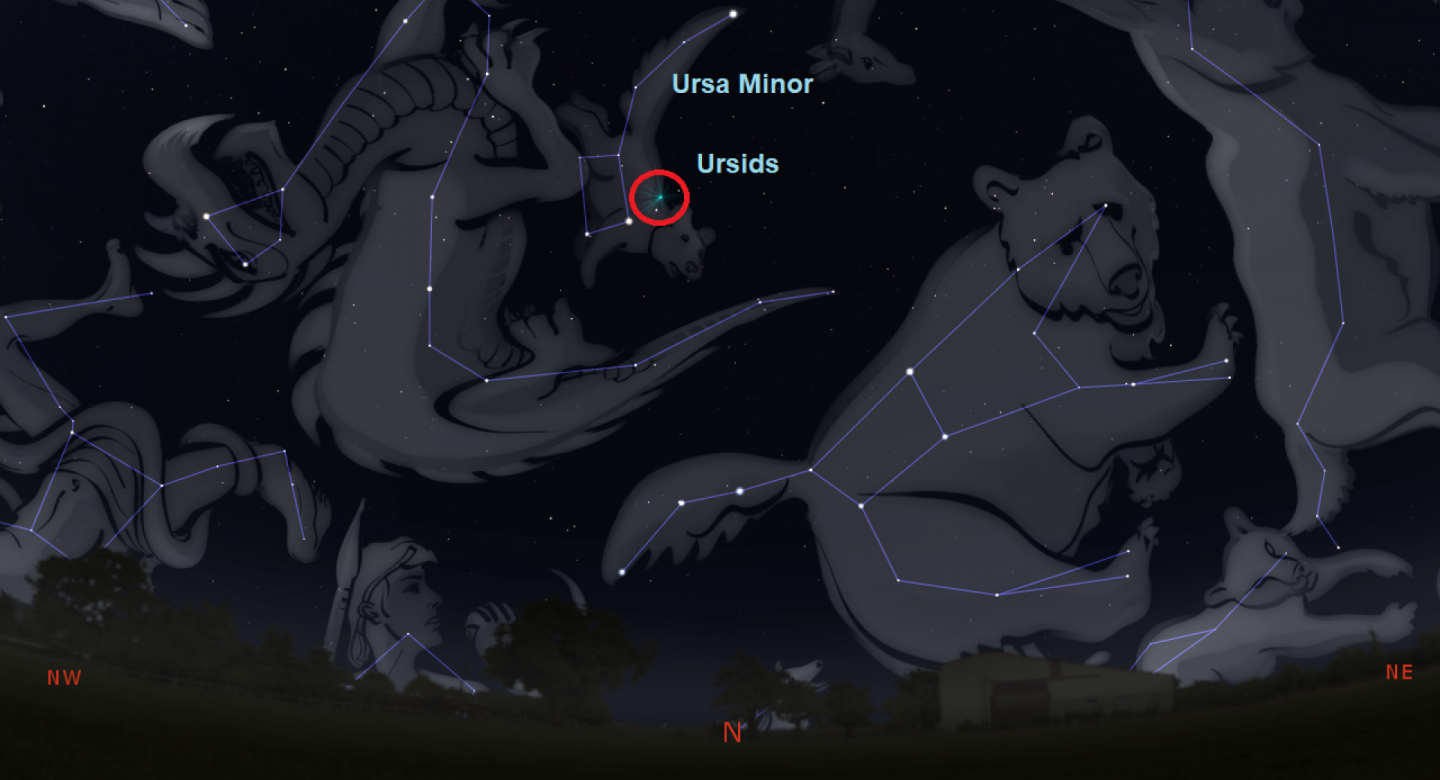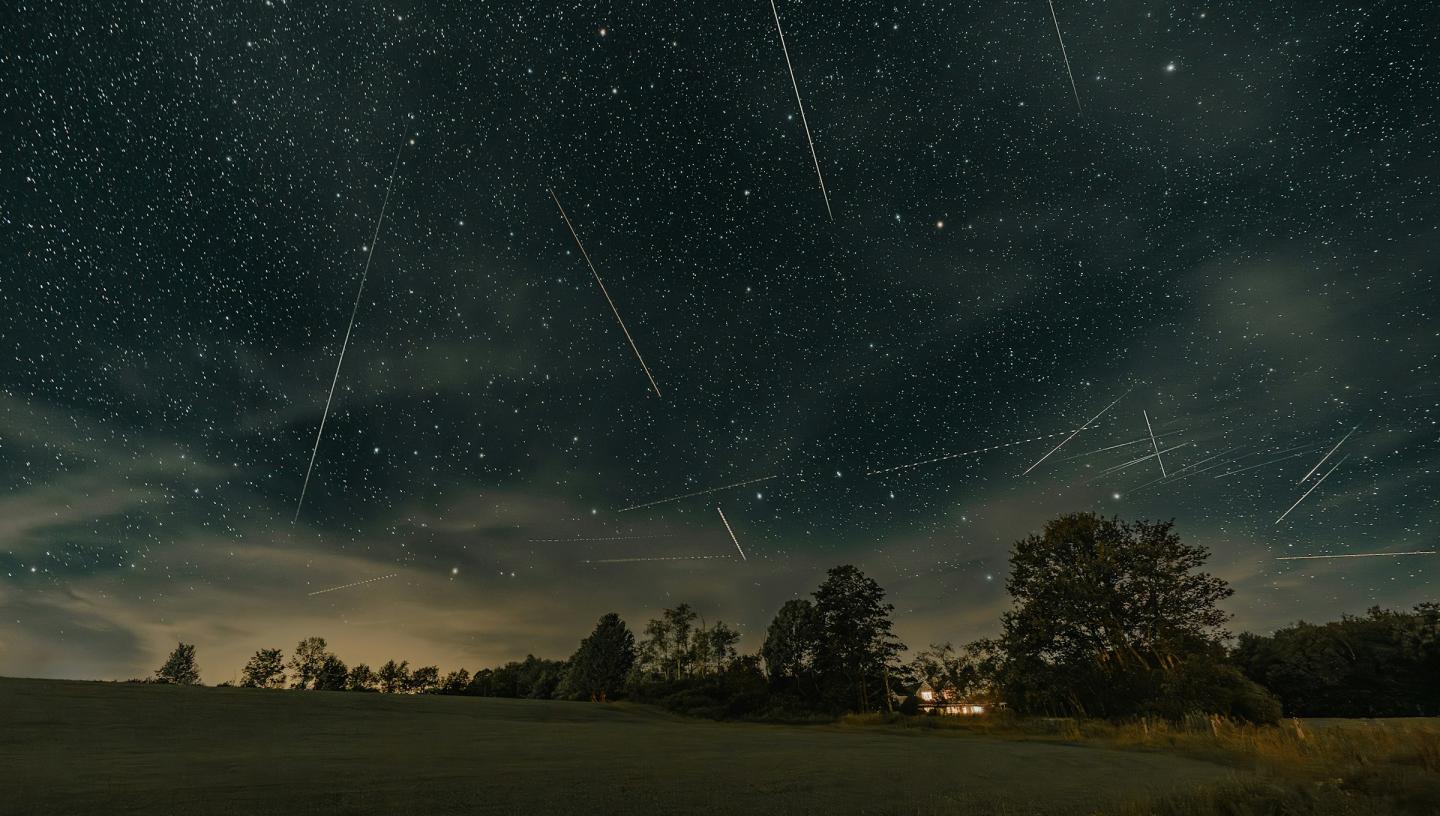
The Ursid meteor shower is usually sparse, producing around ten meteors per hour at its peak.
In 2025, the Ursid meteor shower will be active between 17-26 December and peak on 22 December.
What is the Ursid meteor shower?
Meteors are debris that enters our planet’s atmosphere at speeds of up to 70 kilometres per second, vaporising and causing the streaks of light we call meteors.
Ursids meteors appear to radiate from near the star Beta Ursae Minoris (Kochab) in the constellation Ursa Minor. However, the actual source of the shooting stars is a stream of debris left behind by comet 8P/Tuttle.
Find out the difference between an asteroid, a comet, a meteor, and a meteorite.
When is the Ursid meteor shower?
| SHOWER NAME | DATE OF MAXIMUM | NORMAL LIMITS | PEAK RATE/HOUR | DESCRIPTION |
|---|---|---|---|---|
| Ursids | 22 December | 17-26 December | 10 | Sparse shower. Associated with comet 8P/Tuttle |
Find more meteor showers this year
How can I watch the Ursid meteor shower?
The Ursid meteor shower occurs around the time of the winter solstice, so you will have maximum hours of darkness for stargazing!
In 2025 the shower's maximum occurs when the Moon is a thin waxing crescent and it will set early in the evening, so conditions will be favourable to see this shower.
Hunting for meteors, like the rest of astronomy, is a waiting game, so it's best to bring a comfy chair to sit on and to wrap up warm as you could be outside for a while. They can be seen with the naked eye so there's no need for binoculars or a telescope, though you will need to allow your eyes to adjust to the dark.
Where is best to watch the Ursid meteor shower?
For the best conditions, you want to find a safe location away from street lights and other sources of light pollution. The meteors can be seen in all parts of the sky, so it’s ideal to be in a wide open space where you can scan the night sky with your eyes. But if you trace the paths that the meteors take, they seem to originate from the Ursa Minor constellation.
If you manage to get any pictures of the Ursid meteor shower then we'd love to see them. You can find us on Facebook or Twitter.




